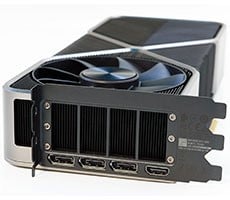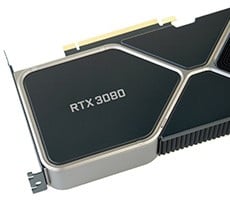HIS Radeon X1650 XT IceQ Turbo and Radeon X1650 XT iSilence II

About a month ago, we had the privilege of reviewing HIS' Radeon X1950 Pro, a mainstream oriented graphics card that performed well, but we felt ultimately came up short against the similarly priced GeForce 7950 GT. The model we received was outfitted with an oversized cooler dubbed the IceQ3 Turbo, came overclocked by default, and supported CrossFire natively using internal ribbon cables, much like SLI with NVIDIA's cards. Although we found much to praise regarding the performance of the X1950 Pro, we found that the lack of availability of HIS products in the reseller market, combined with the possibility of DirectX 10 becoming much more important on the horizon, put a small damper on things. For the time-being however, we're sold on the fact that, in the here and now, the HIS Radeon X1950 Pro is a good investment in a quality product.
In today's review, we take another look at some products from HIS, this time focusing on the lower end of mainstream graphics with the Radeon X1650 XT iSilence II and Radeon X1650 XT IceQ Turbo. Each card comes with its own main selling points. The iSilence II, as its name suggests, is completely silent and devoid of any moving parts in its integrated cooling solution. The IceQ Turbo, on the other hand, sheds silence for speed, coming in with higher clock speeds on both GPU and RAM and a hefty HSF cooler to keep temperatures in check. In essence, we will be pitting these two cards against each other, but we've thrown in some other cards for proper comparisons reference points.
|
|
HIS Radeon X1650 XT iSilence II & IceQ Turbo |
| Features & Specifications |
|
Features - 80nm fabrication process - 24 pixel shader processors - 8 vertex shader processors - Up to 256-bit 8-channel memory interface - Native PCI Express x16 bus interface Ring Bus Memory Controller - Internal ring bus for memory reads - Fully associative texture, color, and Z/stencil cache designs - Hierarchical Z-buffer with Early Z test - Lossless Z Compression (up to 48:1) - Fast Z-Buffer Clear - Optimized for performance at high display resolutions, including widescreen HDTV resolutions Ultra-Threaded Shader Engine - Support for Microsoft DirectX 9.0 Shader Model 3.0 programmable vertex and pixel shaders in hardware - Full speed 128-bit floating point processing for all shader operations - Up to 512 simultaneous pixel threads - Dedicated branch execution units for high performance dynamic branching and flow control - Dedicated texture address units for improved efficiency - 3Dc+ texture compression o High quality 4:1 compression for normal maps and two channel data formats - High quality 2:1 compression for luminance maps and single-channel data formats - Complete feature set also supported in OpenGL 2.0 Advanced Image Quality Features - 64-bit floating point HDR rendering supported throughout the pipeline o Includes support for blending and multi-sample anti-aliasing - 32-bit integer HDR (10:10:10:2) format supported throughout the pipeline o Includes support for blending and multi-sample anti-aliasing - 2x/4x/6x Anti-Aliasing modes o Multi-sample algorithm with gamma correction, programmable sparse sample patterns, and centroid sampling o New Adaptive Anti-Aliasing feature with Performance and Quality modes o Temporal Anti-Aliasing mode o Lossless Color Compression (up to 6:1) at all resolutions, including widescreen HDTV resolutions - 2x/4x/8x/16x Anisotropic Filtering modes o Up to 128-tap texture filtering o Adaptive algorithm with Performance and Quality options - High resolution texture support (up to 4k x 4k) |
Avivo Video and Display Platform - High performance programmable video processor o Accelerated MPEG-2, MPEG-4, DivX, WMV9, VC-1, and H.264 decoding and transcoding o DXVA support o De-blocking and noise reduction filtering o Motion compensation, IDCT, DCT and color space conversion o Vector adaptive per-pixel de-interlacing o 3:2 pulldown (frame rate conversion) - Seamless integration of pixel shaders with video in real time - HDR tone mapping acceleration o Maps any input format to 10 bit per channel output - Flexible display support o Dual integrated dual-link DVI transmitters o Dual integrated 10 bit per channel 400 MHz DACs o 16 bit per channel floating point HDR and 10 bit per channel DVI output o Programmable piecewise linear gamma correction, color correction, and color space conversion (10 bits per color) o Complete, independent color controls and video overlays for each display o High quality pre- and post-scaling engines, with underscan support for all outputs o Content-adaptive de-flicker filtering for interlaced displays o Xilleon TV encoder for high quality analog output o YPrPb component output for direct drive of HDTV displays o Spatial/temporal dithering enables 10-bit color quality on 8-bit and 6-bit displays o Fast, glitch-free mode switching o VGA mode support on all outputs o Drive two displays simultaneously with independent resolutions and refresh rates - Compatible with ATI TV/Video encoder products, including Theater 550 CrossFire - Multi-GPU Technology - Four modes of operation: o Alternate Frame Rendering (maximum performance) o Supertiling (optimal load-balancing) o Scissor (compatibility) o Super AA 8x/10x/12x/14x (maximum image quality)
|
It's actually quite rare to have two such cards in the labs at the same time from the same company. These days, cards have much shorter shelf lives, and it's not uncommon to see graphic cards arrive that are little more than the original reference design with the logo of the manufacturer quickly slapped on top of the heatsink (in fact, twice in the past year, said logo was haphazardly placed, allowing us to see the original ATI or NVIDIA graphics beneath it). HIS deserves a bit of praise here, as they have sought out two differing aspects of the market - those looking for moderate performance but a quiet system, and those simply looking for some good performance without getting two pricey. Over the past couple of months, we've seen that HIS has been very busy covering all angles, from the lower end X1650 Pro that Jeff looked at back in November, to the powerful X1950 XT Michael covered just a couple of weeks ago.







